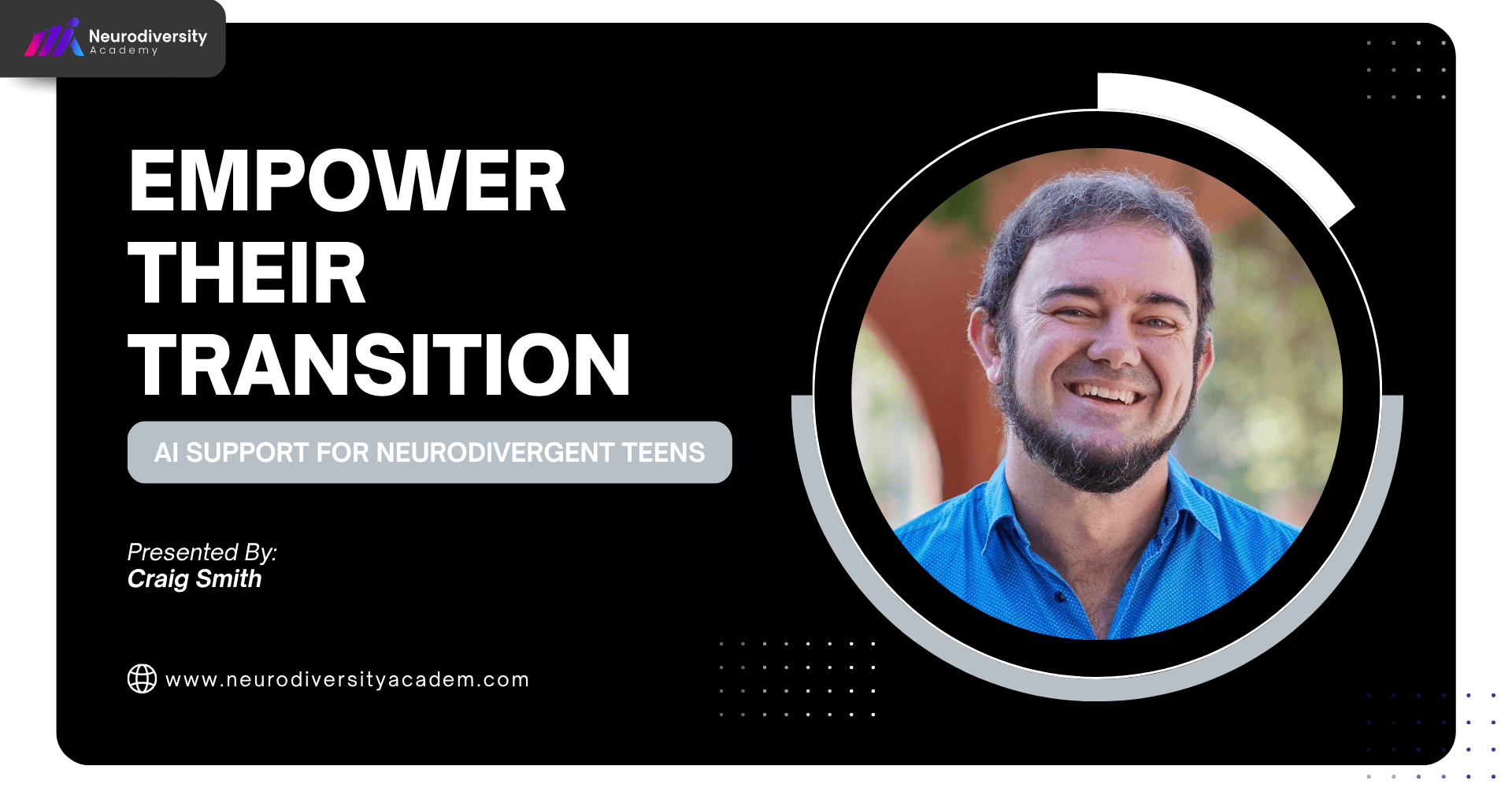From Education to Employment: Creating Neuro-Inclusive Pathways
For many neurodivergent individuals, the journey from school or university to the workplace is filled with barriers. These barriers are often not a result of lack of skills or ambition but rather due to systemic gaps in understanding, support, and inclusion. As society becomes more aware of the benefits of embracing cognitive diversity, it’s time to ask: how can we create smoother, more empowering transitions for neurodivergent people moving from education to employment?
In this article, we explore what inclusive transitions look like, the role of educators and employers, and the importance of building bridges—not just ticking boxes.
The Transition Gap: Where Systems Fall Short
The education system and the employment system are often disconnected when it comes to neurodiversity. Students may receive supports such as accommodations, learning plans, or allied health interventions while in school, but once they graduate, these supports can disappear overnight.
This “support cliff” leaves many neurodivergent young people struggling to adjust to the demands of job hunting, workplace norms, or even understanding what types of roles might align with their strengths. Without clear, inclusive pathways, capable individuals fall through the cracks—despite being ready and willing to contribute.
Barriers in Recruitment and Hiring
One of the first obstacles neurodivergent jobseekers face is the traditional recruitment process.
Common issues include:
- Job advertisements that use vague or jargon-heavy language.
- Application forms that are inflexible or inaccessible.
- Interview processes that favour verbal fluency, eye contact, and social charm.
- Assessments that rely on multitasking or fast recall under pressure.
- Office environments that are often intolerable for high-sensory people, such as LED lighting, loud and/or distracting noises, closed spaces, too many people or hurdles to get to meeting rooms and potential waiting times in a similar environment.
These practices are not inherently malicious—but they are exclusionary. They test for neurotypical behaviours, not job-relevant skills.
For example, an autistic applicant might excel in software development but struggle to make small talk in an interview. A person with ADHD might thrive in fast-paced environments but find it hard to complete lengthy written applications. Without inclusive hiring, organisations miss out on extraordinary talent.
What Inclusive Hiring Looks Like
Inclusive hiring doesn’t require lowering standards. It requires widening the lens of what competence and potential look like. Best practices include:
- Clear, straightforward job descriptions with specific expectations.
- Alternative application methods (e.g., video submissions, practical tasks).
- Sending interview questions in advance.
- Replacing interviews with trial shifts or project-based assessments.
- Ensuring accessibility in digital platforms and physical spaces.
Some employers, like IBM and Ernst & Young, have created neurodiversity-focused recruitment programs. These initiatives have proven not only inclusive but highly effective in attracting loyal, innovative employees.
Preparing Neurodivergent Students for the Workplace
While employers must change their practices, education systems also have a role to play in preparing students for neuro-inclusive work environments. This includes:
- Teaching self-advocacy skills (e.g., how to ask for accommodations).
- Building executive functioning through real-world tasks.
- Offering work experience placements tailored to neurodivergent strengths.
- Providing career counselling that understands cognitive diversity.
Universities and TAFEs should partner with employers who understand inclusion and who are willing to support diverse learners during internships, placements, and apprenticeships.
The Role of Career Services
Career services in educational institutions are often underutilised by neurodivergent students—partly due to lack of awareness, and partly due to lack of trust. These services can become more inclusive by:
- Providing quiet, sensory-friendly environments.
- Offering resources in multiple formats (visual, video, audio).
- Training staff on neurodiversity and communication styles.
- Connecting students with mentors who are also neurodivergent.
When students feel seen and supported, they are more likely to engage and take proactive steps toward employment.
Designing Inclusive Onboarding
Getting the job is only the beginning. Onboarding is a critical phase where neurodivergent employees either feel welcomed and equipped—or overwhelmed and disconnected.
Inclusive onboarding includes:
- Clear schedules for the first week, explained in advance.
- Step-by-step introductions to tasks and systems. Multimodal approaches provide additional reinforcement, that is a combination of modelling and written instructions.
- Time to process and ask questions without pressure.
- Collaborative opportunities, completing tasks within a group environment.
- Opportunities to shadow peers or receive hands-on demonstrations.
- Troubleshooting guidance—combined with proactive check-ins by mentors.
- Consistency is critical in early stages.
Visual guides, recorded tutorials, and regular check-ins can make a huge difference in building confidence and trust.
Workplace Supports that Make a Difference
Accommodations don’t have to be expensive or complicated. Common supports that benefit neurodivergent employees include:
- Flexible hours or remote work options.
- Noise-cancelling headphones or quiet workspaces.
- Clear agendas, issued prior to meetings. Follow-ups for non-RSVPs. Written follow-ups after meetings and opportunities to clarify understanding.
- Task management tools like Kanban-Trello (good for task management), Notion (sense-making for project management progress to clear outcomes), or visual calendars (time management and routine).
- Mentoring programs that offer guidance and social connection—consistency reduces anxiety and improves efficiency.
Most of these supports benefit all staff—not just neurodivergent team members. They create environments where people feel empowered to work in ways that align with their strengths.
Cultivating Inclusive Cultures
One-off accommodations are not enough. Inclusion must be embedded into the culture of the workplace. This involves:
- Leadership commitment to neurodiversity.
- Company-wide training on inclusive communication and unconscious bias.
- Celebrating neurodivergent role models and success stories.
- Creating employee resource groups for neurodivergent staff.
- Reducing barriers to opportunity for self- and job promotion.
When organisations value different ways of thinking, problem-solving, and contributing, they become more innovative, resilient, and attractive to top talent.
The Importance of Mentorship
Mentorship is particularly valuable during career transitions. Neurodivergent individuals benefit from guidance not just on job tasks, but on navigating workplace norms, self-advocacy, and career planning.
Where possible, pair neurodivergent employees with mentors who understand their lived experience. This could be a peer, a manager, or an external coach. What matters is trust, respect, and a willingness to learn together.
Bridging the Gap with Policy and Advocacy
Systemic change requires more than good intentions. It requires policy. Governments, educational institutions, and industry bodies can contribute by:
- Funding inclusive internship and employment programs.
- Requiring accessibility audits for education-to-employment initiatives.
- Incentivising inclusive hiring through grants or recognition programs.
- Creating guidelines for neuro-inclusive onboarding and workplace design.
Advocacy organisations play a vital role in pushing for these changes and amplifying the voices of neurodivergent people in the process.
Empowering Neurodivergent Jobseekers
Ultimately, the goal is not just to “place” neurodivergent individuals into jobs—it’s to empower them to pursue meaningful careers on their own terms. This includes:
- Helping them identify their strengths and values.
- Supporting them to build networks and portfolios.
- Encouraging them to explore entrepreneurship or self-employment.
- Validating their right to take up space, be accommodated, and thrive.
Empowerment is not about fixing people. It’s about fixing systems.
Conclusion: A Path Worth Building
The journey from education to employment is a pivotal stage in life. For neurodivergent individuals, this transition is often filled with untapped potential. With inclusive hiring, supportive education, and proactive workplace design, we can bridge the gap and ensure all minds have the opportunity to shine.
This isn’t just about compliance—it’s about building workplaces and communities that reflect the true diversity of human thought.
The future of work is inclusive. Let’s create pathways that welcome everyone to walk forward with dignity and purpose.
Author Acknowledgement: Based on the original work by Leanne Gaul





